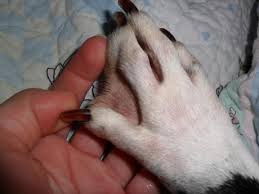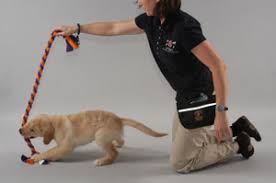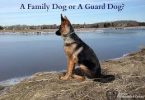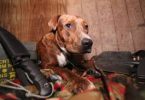
When choosing a dog for protection you want to be certain that they are sound both mentally and physically. This is necessary in order to determine that they will be capable of handling the job. If you decide to choose a puppy for your prepper dog you will want to test it’s temperament and personality. You can begin temperament testing on a puppy as early as eight weeks old. Eight week old puppies can be tested for things like noise shyness, pain threshold, nervousness, dominance, prey drive and to a small degree, defense. There are many different versions of temperament tests. This one works well for choosing a suitable prepper puppy.
Be sure to take your time and find a reputable breeder. Don’t go with the first person you hear about or are referred to. The best way to find a breeder is to call your local breed or kennel club. Attend local dog sports trials such as agility, Schutzhund or flyball. Speak to the owners who own the breed you are looking for and ask about their breeder. Speak with local dog trainers in your area regarding breeders they would recommend. Ask your veterinarian or ckeck the AKC website. Just be sure to take your time and do your homework!
Nervousness and Stress Level Test

Key Test
With all the puppies loose in an approximately 10 foot by 10 foot area, take your keys out and call the puppies, shaking the keys. Now throw the keys down in the middle of the puppies. Note their reactions. You do not want to see them cower and run. You want to see the pups stop, orient toward the noise and then go investigate it. The pup that picks up the keys and runs away with them is dominant and assertive.

Mechanical Toy Test
Take a mechanical toy, Something that walks, talks, bounces, barks, etc and turn it on in the center of the room where the puppies are playing. You want to see the puppies stop, look and investigate. If they bark at it, this is a good sign of puppy defensiveness, and it is even better if they touch it. The pup that investigates and plays with the toy is dominant and assertive. You want to see a curious dog who will pounce the toy.

Elevation Test
Put the puppy on a table or raised counter where the surface is not slippery, but where the puppy can see over the edge. This will ensure that the reaction you see is caused by the elevation and not the slippery surface. If the puppy cowers down and shakes, you will note nervousness. If the puppy wags it’s tail and looks ready to jump, the opposite is true of the pup. Do not let the puppy jump off the surface!

Pain Threshold
Take the puppy’s foot in your hand, and very lightly, pinch the webbing between his toes. You want to see the puppy notice the pinch and pull away gently or lightly put it’s mouth over your hand indicating it doesn’t care for what your doing.
If the pup does not seem to even notice, you will need to keep a watch on whether this puppy is too dull or lacking in drives and awareness. On the other hand, if you see the puppy panic and yelp or bite at your hand aggressively and thrash about, you will need to worry about low pain threshold, poor nerves and ultimately, a fear biter.

Noise Shyness
Banging two pans together is a good test for noise shyness. You want to see the puppy cock his head to the side, which is an indication of steady nerves. Take two or three stainless steel pans into the puppy room. At a distance of six to eight feet from the puppies, drop the pans to the ground one at a time.
Note the puppies responses. They should freeze, orient themselves to the noise and then choose to investigate or ignore, but they should not shy away or attempt to hide.

Dominance Test-Hold Down
Take each puppy and flip them over on their backs. Hold your hand over their shoulders, just below the neck as if you were pinning the shoulders down. Hold the pup in this position as long as you can. Does the puppy tolerate it and then struggle to get loose? Does the puppy freeze? Does the puppy panic and try to bite you? Does the puppy alternately struggle, settle, struggle, settle? To a degree, the more struggling the puppy does, the more dominant he is likely to be. A dominant puppy does not like to be pinned down, as this is a dominant act from a K-9 point of view.
If the puppy goes wild and bites at you, be aware that this may be a future stress case or fear biter. a puppy that is dominant by nature will not be comfortable being held on it’s back. The puppy should struggle to remain upright.

Prey Drive Balls, Rags, Puppy Tugs
Drag a puppy tug or rag in front of the puppies. You will want to see the puppies chase and bite at it. Chasing but using the paws to pin the tug is not as good because it shows a tendency for weak biting in the future.
Observe the Litter
Try to test and observe the litter at least three times before you make your selection. This helps to ensure that your observations are correct. I always like to have an additional set of eyes accompany me. Puppies, just like humans, can have off days. A puppy who just finished eating, just woke up or feels ill may not display their true temperament. Try to test the puppies before they eat.
The breeder should be a excellent resource provided you ask the right questions. Ask questions such as who dominates the food dish or a new toy? Who barks or growls when startled? Who runs forward to investigate a stranger? Who dominates in play?
Good breeders will put identifying collars or ribbons on each puppy in order to color code them. This can be done so that these observations on health and temperament can be noted.
References: Karen Freeman Duet






